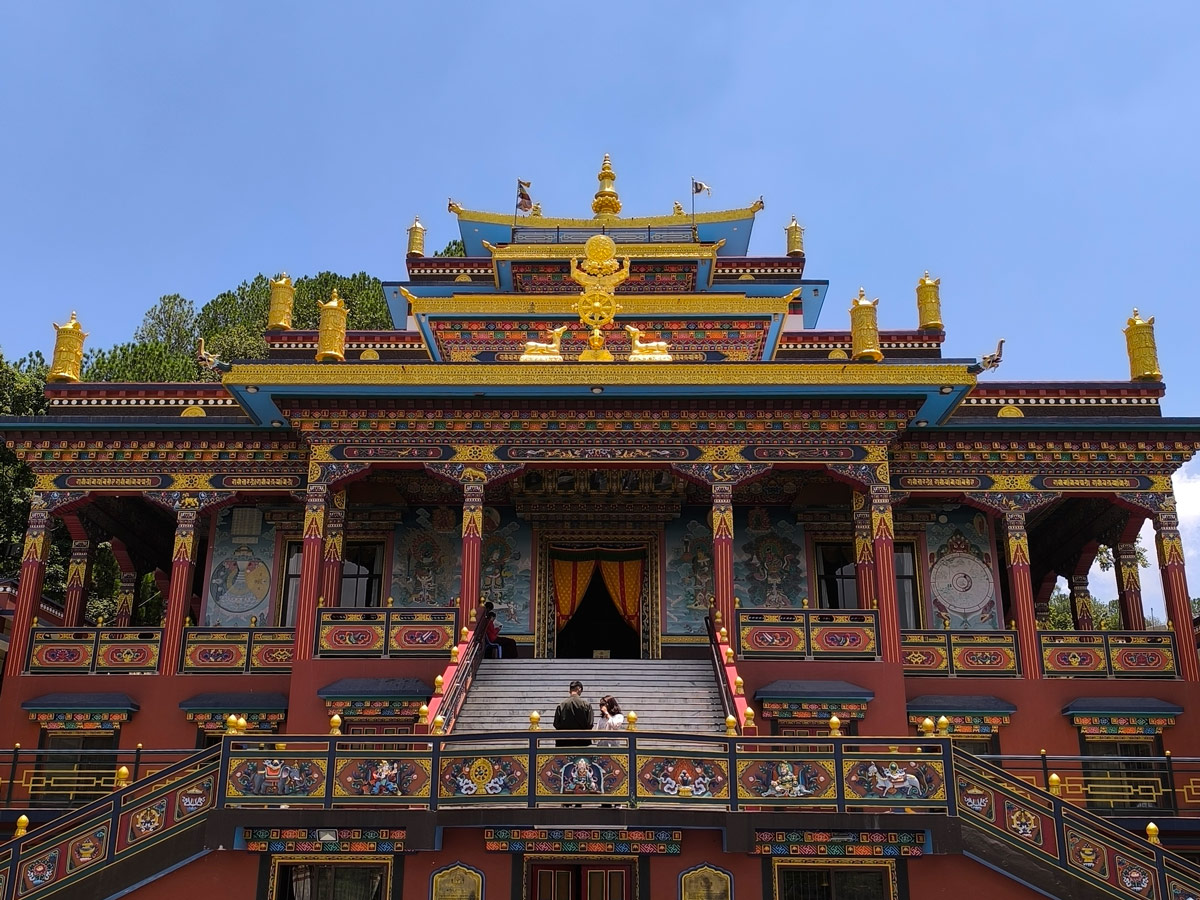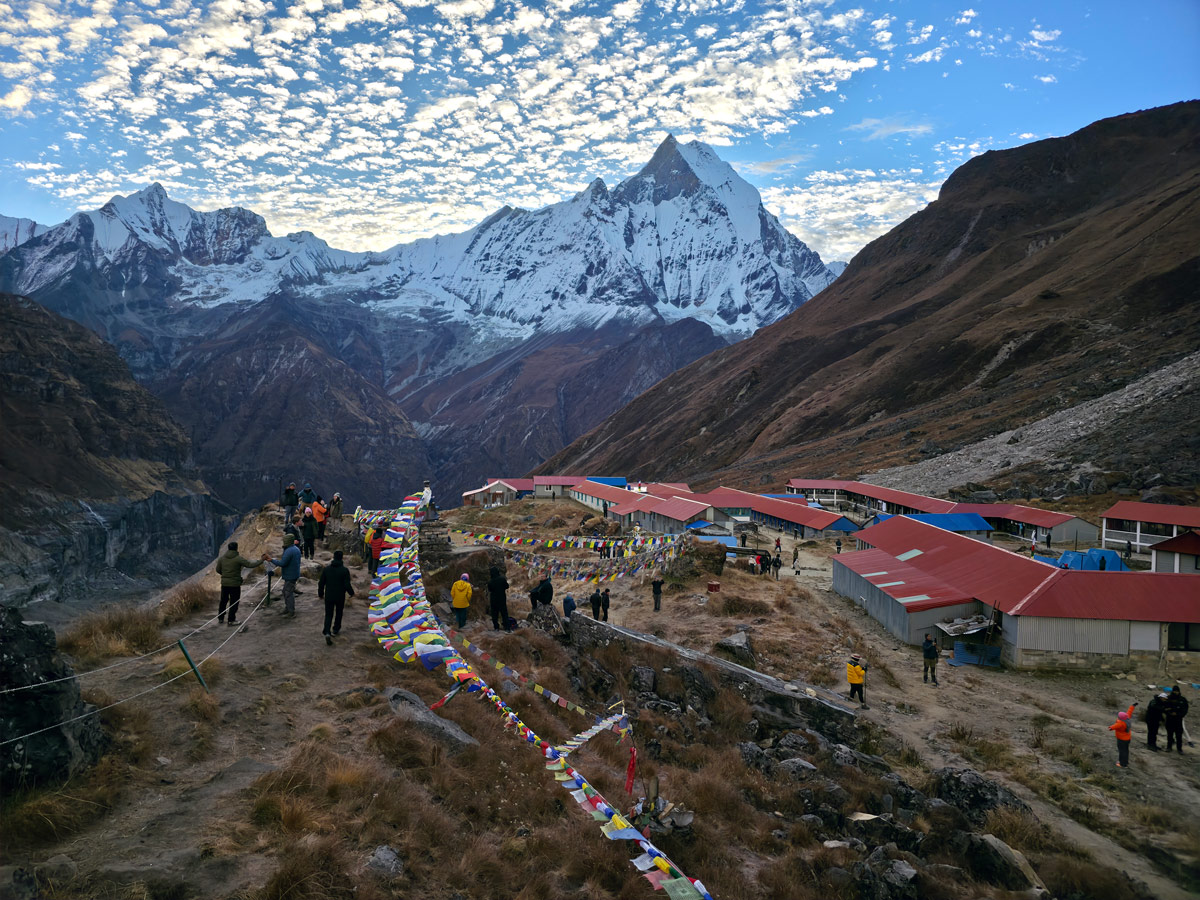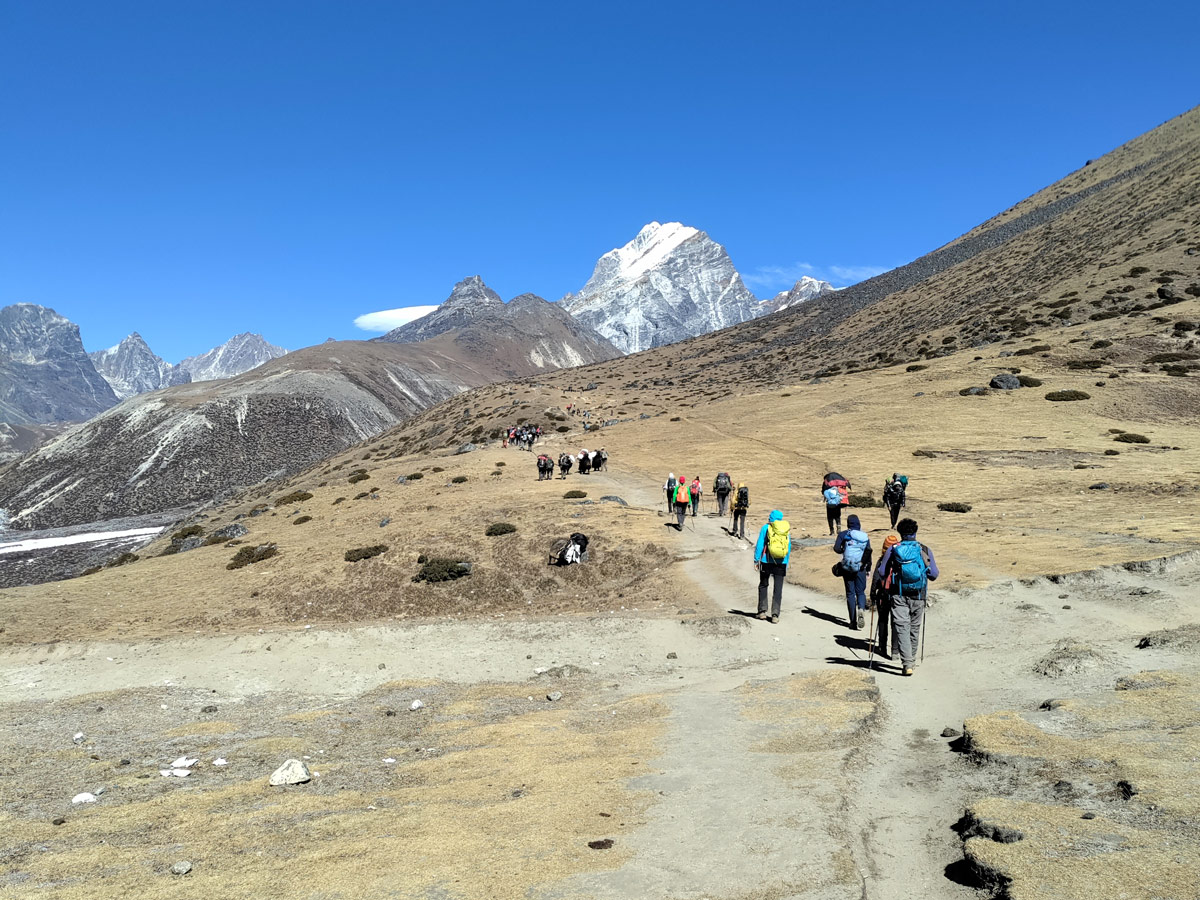Nestled between the towering Himalayan peaks of Nepal, Kathmandu Valley is a must visit destination for any trekker heading to Nepal as there are many things to do in Kathmandu along with many places to visit.
It is home to many UNESCO World Heritage Sites of Nepal, palaces, temples, and more. Besides that, Kathmandu Valley is also a sanctuary of the Buddhist Culture.
The Valley is home to some of the most serene monasteries and sacred Buddhist sites which gives a clear glimpse into the cultural heart of Nepal and takes the visitors on a tranquil journey.
Among the several monasteries situated in the valley, each holds a special significance. However, it is not possible to visit all of these monasteries in your short span of visit to Kathmandu.
Therefore, in this guide, we explore the top monasteries that you should not miss visiting while you are in Kathmandu Valley, while also providing insights on their history, significance, and the experience that awaits you.
Why Visit Monasteries in Kathmandu Valley?
First and foremost, you should know why amongst all the things to do and experiences to enjoy in Kathmandu Valley, visiting these sacred monasteries should be on your bucket list.
See, the monasteries of Kathmandu Valley are not merely a place of worship. There is a lot more to them. They can be seen as the centers of art, history, and the pillars of cultural heritage of Nepal.
These monasteries offer a first-hand glimpse into the rich Buddhist Heritage of Nepal. Dating back centuries, these monasteries are a solid representation of the unique cultures of Tibetan Buddhism and local traditions of the valley.
They also showcase the unique architectural beauty which is central to the distinct Buddhist architecture and features elements like towering stupas, intricate wooden cravings, prayer wheels, and vibrant prayer flags.
Visiting these monasteries also adds an element of tranquility in your entire journey as you will be able to meditate in peace and reflect and connect with your spirits here.
Not to forget, the picturesque and vibrant setting of fluttering prayer flags, monks in their traditional attire, Tibetan scripts written all around, and the colorful architecture provide you the best photography opportunities.
Top Monasteries in Kathmandu Valley
Kathmandu is known as the spiritual heart of Nepal for a reason. There are countless monasteries in the valley, and big or small, all of these monasteries have significant importance for the locals.
Below are some of the major and famous monasteries that you can include in your itinerary while in Kathmandu. Happy exploring!
Kopan Monastery
Another significant monastery located in the outskirts of Kathmandu Valley is the Kopan Monastery which is not just a monastery but also a home to many monks, lamas, teachers, and workers.
It is famous for the various meditation retreats that it offers, including introductory as well as advanced meditation courses. The scenic hilltop location of the monastery adds to its allure of being a quiet and tranquil meditation spot.
This Tibetan Buddhist Monastery also offers Buddhist studies programs among other things. Thousands of visitors make it to Kopan Monastery every year, especially beginners who want to learn more about Tibetan Buddhism.
The monastery provides in-depth teachings on Buddhism and mindfulness, that too in English to overcome any sort of language barrier, inviting visitors to experience both guided and self-directed meditation sessions.
Established in 1970s, this monastery follows a strict Tibetan Buddhist architectural style and the intricacies of the monastery are a delight to your eyes, including even the distant views of the monastery.
You will find that the monastery is surrounded by beautiful gardens and landscaping including lawns, flowers, shrubs, flowering trees, and more which add to the vibrant beauty of the place.
For those not willing to indulge in the meditation courses, you can simply explore the library, take a walk in the gardens as you appreciate the build of the monastery, and enjoy the stunning views of Kathmandu Valley from the hilltop.
Pullahari Monastery
Located in the Budhanilkantha region of the valley on the northern hills, the Pullahari monastery is famous for its serene location and atmosphere, along with the stunning panoramas of Kathmandu Valley that it offers.
The monastery mainly serves as a site for protection of cultural heritage as it shows the details of Tibetan Buddhist architecture in its exterior as well as interior build.
There are many daily rituals performed in the monastery which can be observed by the visitors as the resident monks are quite friendly and willing to educate about the teachings of Tibetan Buddhism.
This cultural landmark embodies the spiritual heritage of the region where it is located, and it also offers a 3-year retreat of the ancient Mahamudra lineage, followed by which the interested people can become Lamas.
Shechen Monastery
Shechen monastery is a significant monastery in Tibetan Buddhism, especially because it has a lot of historical value and cultural sentiments attached to its establishments.
Shechen monastery was once located in Tibet and it was one of the six primary Nyingma monasteries of Tibet. However, the monastery structure was destroyed in 1950’s during the Cultural Revolution.
Dilgo Khyentse Rinpoche, who was in exile back then, sought to transplant the rich tradition and value of the original Shechen monastery and rebuilt it in Kathmandu aiming to preserve its religious and cultural significance.
Now, Shechen Monastery in Boudhanath serves as a key cultural center for Tibetan Buddhists and also plays an important role in preserving the ancient Tibetan Buddhism traditions.
Swayambhunath Stupa
Famously known as the Monkey Temple, Swayambhunath Stupa is one of the most famous monasteries of Kathmandu Valley, and also a UNESCO World Heritage Site which you should really look forward to.
Located on top of a hill, this monastery is also regarded as one of the oldest religious sites of Nepal as it dates back almost 2000 years. As the name suggests, you will find a great population of resident monkeys here.

The stupa features a massive white dome crowned by a golden spire along with the powerful and stunning all-seeing eyes of Buddha gazing out in all four directions of the stupa which watch over the valley and symbolize wisdom.
You will find a temple within the stupa along with small shrines, prayer wheels, the beautifully decorated base of the stupa, place for lighting the lamps, and fluttering prayer flags.
The stupa overlooks the entire Kathmandu Valley and the view from the top is simply mesmerizing. You will also find a spot from where you can enjoy the better view through a telescope.
The climb to Swayambhunath Stupa is indeed challenging as you will have to climb the 365+ stone stairs. However, the lovely views and the vibrant atmosphere created by the local vendors makes the climb absolutely worth it.
Boudhanath Stupa
Another fascinating addition to some of the most popular monasteries of Kathmandu Valley is the Boudhanath Stupa which is one of the largest Buddhist stupas in the world and also an important pilgrimage site for the Tibetan Buddhists.
It is located in the bustling heart of Kathmandu Valley and also another UNESCO World Heritage Site of Nepal. Along with being a center for Tibetan Buddhist worship, it is also one of the most popular local attractions.
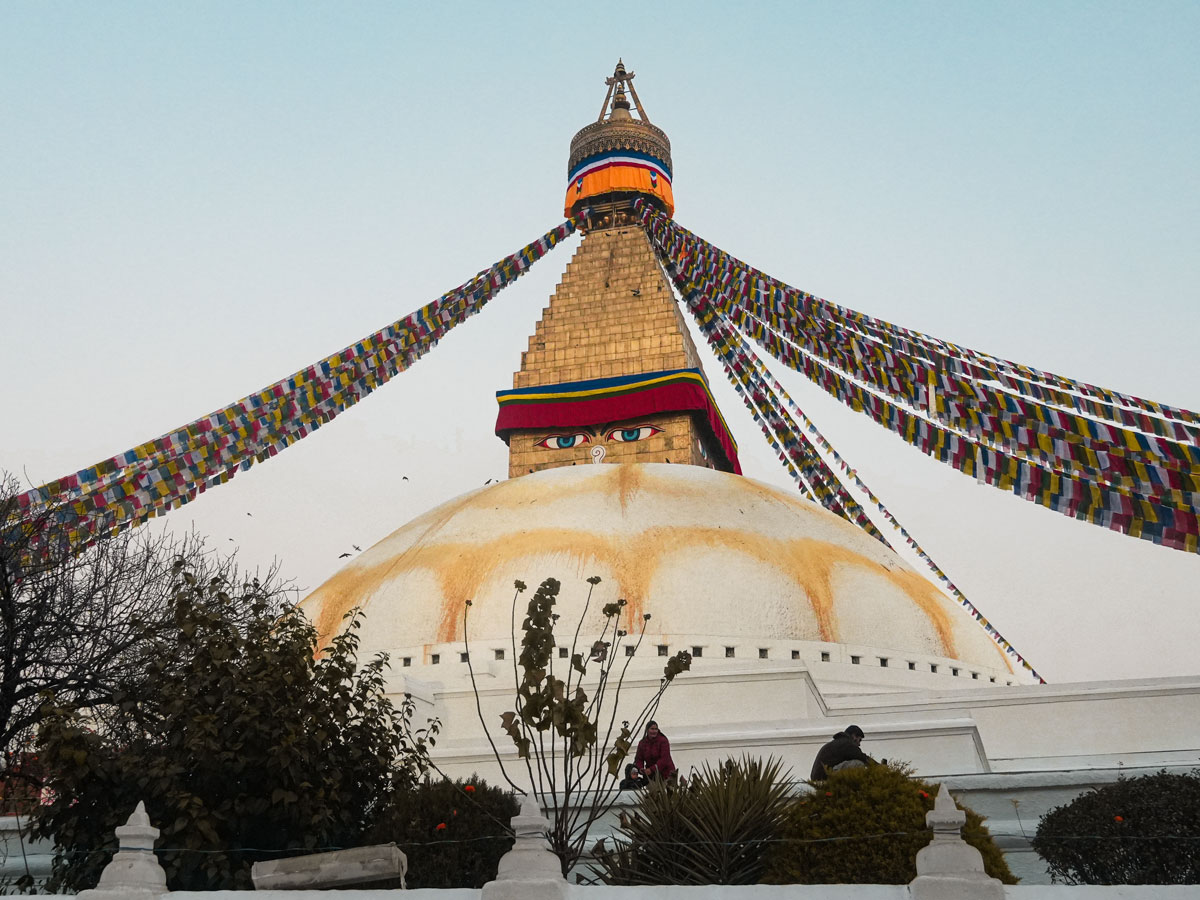
The structure of Boudhanath is rich with symbolism, and when you look closely at the different parts of Boudhanath Stupa, each element represents profound Buddhist teachings. It features a 36-meter-high stupa with a domelike structure, a mandala, a towering gold pyramid, and Buddha eyes inscribed on it in all directions.
The dome of the stupa is often whitewashed and you will find that the white dome is colored and decorated with yellow or orangish color which is made up of saffron and which is supposed to resemble the petals of a lotus.
The stupa represents the mind of Buddha and it is surrounded all around by prayer wheels and vibrant and fluttering prayer flags. Tibetan Buddhists visit here and circumambulate the stupa (perform Kora) as they spin the prayer wheels.
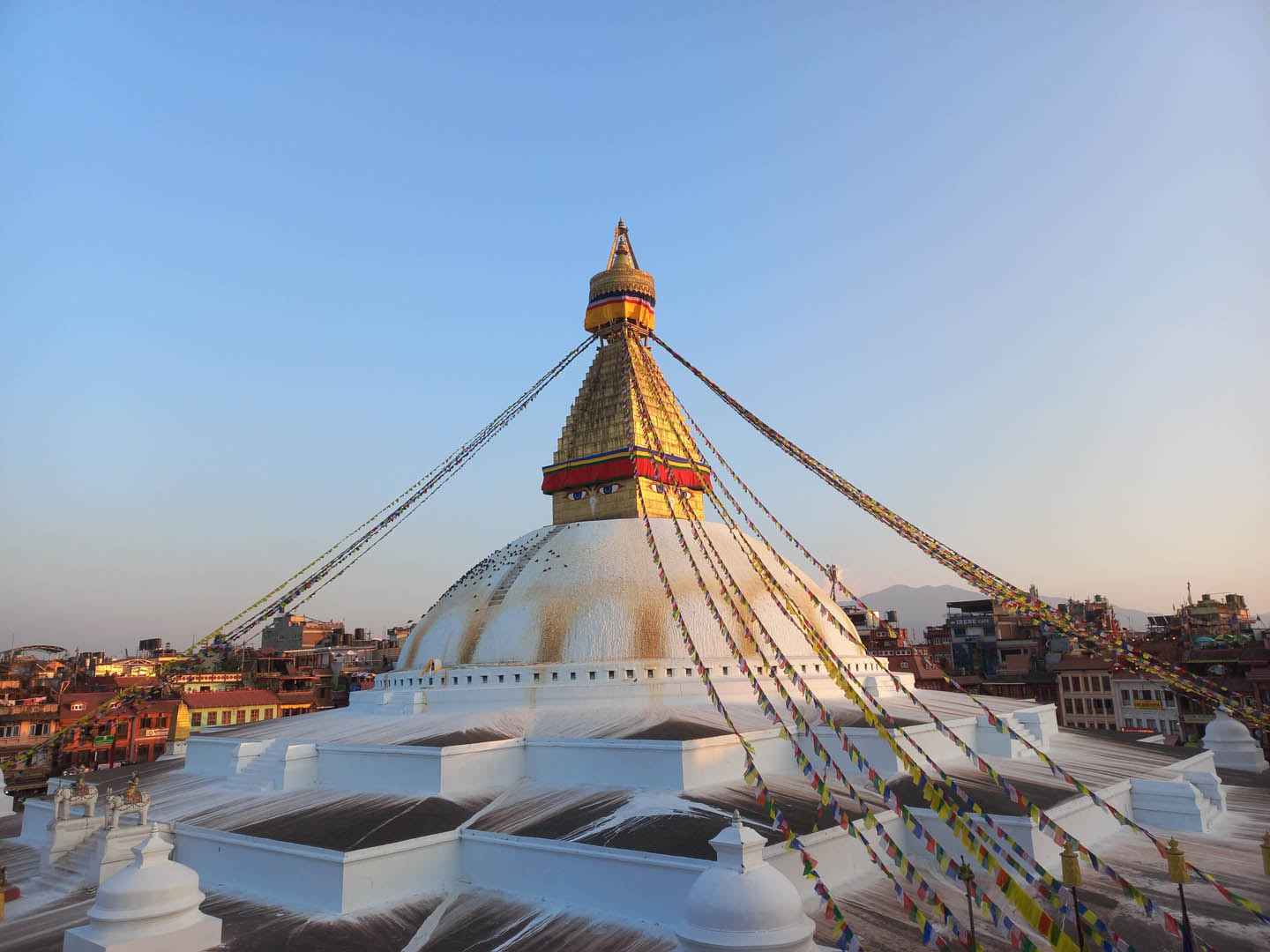
The vibrancy of the area is further enhanced by the shops and cafes surrounding the stupa where you can find many local delights, handicrafts, clothes, thangkas, and delicious local food items.
When you visit Boudhanath Stupa, you can either simply sit here and observe the activities of locals, engage in peaceful meditation, join the visitors in the circumambulation, or enjoy the vibrant atmosphere here as you indulge in the delicious local food.
Thrangu Tashi Choling Monastery
Located in Nala, near Bhaktapur, Thrangu Tashi Choling Monastery is one of the most visually striking monasteries in Nepal. Built under the guidance of Khenchen Thrangu Rinpoche, a highly respected teacher in the Karma Kagyu tradition, the monastery is both a spiritual and cultural landmark.

The monastery complex is grand in scale, with ornate golden statues of Shakyamuni Buddha, Chenrezig, and Guru Rinpoche dominating the prayer hall. The walls are covered in vibrant murals depicting scenes from Buddhist cosmology, life stories of great masters, and symbolic deities that guide practitioners on the path to enlightenment.
Beyond its beauty, the monastery serves as an important educational institution. Hundreds of young monks live and study here, learning Buddhist philosophy, ritual practices, debate, and meditation. The monastery also organizes annual ceremonies that attract pilgrims and locals from across Nepal. During these events, the air fills with chanting, cymbals, and the rhythmic beat of ritual drums, creating an atmosphere of profound devotion.
Namo Buddha
While not exactly situated within the Kathmandu Valley, Namo Buddha monastery is another significant monastery which you can visit by traveling just a couple of hours outside the valley.
Originally known as Thrangu Tashi Yangtse Monastery, Namo Buddha is one of the most significant pilgrimage sites for Tibetan Buddhists in Nepal and it holds a huge legendary significance.
As per the legends, Gautam Buddha was reborn in the form of Prince Mahasattva in his previous life, who discovered a starving tigress and her cubs in the location of the present day Namo Buddha.
To save the tigress and her cubs, the prince offered his body to the tigress who ate his flesh and only the bones of his body were left as remnants. These bones were buried in a tomb, and the same tomb is worshipped as Namo Buddha today.
The stupa is located at a distance of around 40 kms from Kathmandu Valley on a hill. You will see spectacular Himalayan views from the monastery as you enjoy the Tibetan inspired design of the stupa.
A visit to Namo Buddha can make for a perfect day trip, especially for trekkers as you can also go for hikes nearby and set a stage for your upcoming challenging treks.
White Monastery
Seto Gumba, famously known by its English name, i.e. White Monastery is another beautiful monastery which is located at a certain distance from Kathmandu Valley on top of the Druk Amitabha Mountain.
The structure of the monastery is such that it fascinates the visitors even from a distance far away as the monastery along with a huge Gautam Buddha statue is visible for people far away too.
The pristine white dome structure with a golden spire makes it a visual highlight of the valley, and you will also find a unique combination of other architectural delights.
The popularity of this monastery also comes with the fact that many tourists like hiking to the monastery which makes it a visit to a peaceful place along with a small adventure activity that one can accomplish.
The monastery features intricate wall paintings, statues, and meditation halls, attracting both tourists and local devotees. This monastery is a great spot for both meditation as well as photography enthusiasts.
Rigon Tashi Choeling Monastery
In the sacred town of Pharping, south of Kathmandu, lies Rigon Tashi Choeling Monastery, a jewel of the Nyingma school of Tibetan Buddhism. Pharping itself is considered a holy site because Guru Padmasambhava, also known as Guru Rinpoche, is believed to have meditated in caves here and attained realization. This spiritual energy makes the monastery’s setting especially powerful.
Established by the late Rigon Rinpoche, the monastery has become a vibrant center of practice and learning. Its architecture blends modern design with traditional Tibetan artistry—towering golden statues, prayer halls filled with thangka paintings, and intricately carved wooden doors that tell stories of Buddhist teachings.
Things to Keep in Mind During Your Visit
Your visit to the monasteries of Kathmandu won’t merely be a visit to some random tourist spots. These are places with high religious and cultural importance. Therefore, make sure to keep these things in mind:
- Follow a certain dress code. You are expected to dress modestly with clothing items that cover your knees and your shoulders.
- Remove your shoes before entering the monastery as it is a place of worship for Buddhist pilgrims.
- Don’t disturb the tranquility of the monasteries. Avoid making loud noises and maintain respectful silence.
- Most of the monasteries are open to photography. However, make sure that you seek for permission before taking pictures of the monastery.
- Don’t click pictures of the monks without their permission as it can be considered to be disrespectful.
- When you are clicking pictures, avoid using flash.
- If you are interested in knowing more about Tibetan Buddhism, you can ask the monks. But make sure to be respectful about it.
- Do not participate in any ritual haphazardly. If you want to be a part of it, learn the correct way to do it from the local devotees so as to not disrespect the culture in any way.
- Early mornings or late afternoons offer a more tranquil experience, and are often best for meditation and prayer activities.
